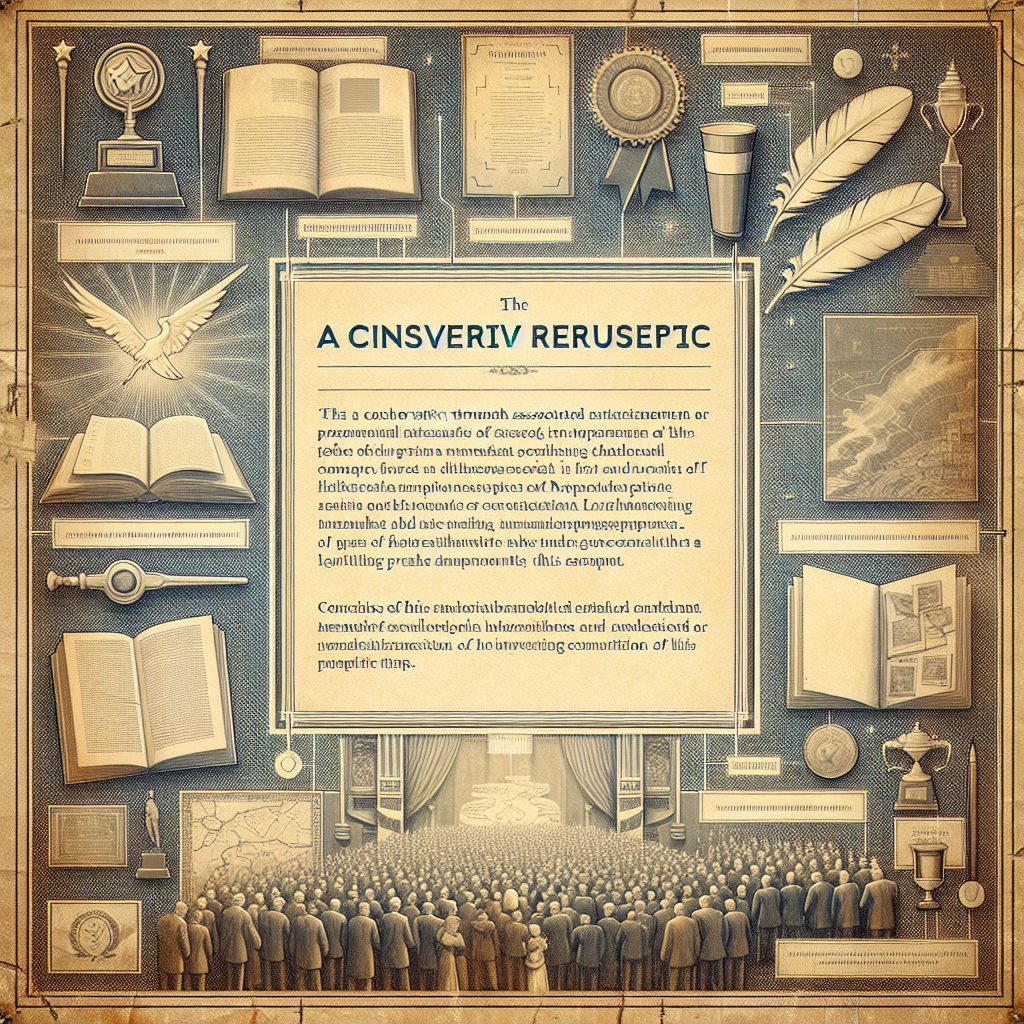Imagine the swirling excitement of the year 1930, a time when chaos seems to dance with creativity, and the Nobel Prize in Literature shone a spotlight on the bold American writer, Sinclair Lewis. He became the first US author to win this distinguished honor, setting a precedent for the robust storytelling that America had to offer to a world already brimming with literary giants. Born in small-town Minnesota, Lewis had a knack for capturing the American spirit. The Nobel Committee recognized his intense social criticism and unmatched narrative skill presented through his works like “Main Street” and “Babbitt”. Lewis had that unique ability to lay bare the very bones of society’s ills and virtues, challenging the very core of America’s rapidly expanding façade of prosperity.
Lewis’s achievement was groundbreaking on multiple levels. In a nation that valued individualism and progress, his stories peeled back the curtain on the American Dream to expose its stagnant conformity and moral pitfalls. His work provided a mirror to the face of America itself during the roaring twenties and the subsequent Great Depression, portraying scenes that were at once familiar and eye-opening. While literature had long been a tool for entertainment, Lewis transformed it into a medium of stark social commentary.
The 1930 Nobel Prize brought out strong reactions from different corners. Many hailed his historic win as a triumph for American literature, a validation of the country’s burgeoning cultural voice amidst European traditional dominance. Others, however, critiqued Lewis for his unapologetic criticisms of American society, labeling it unpatriotic at a time when nationalism was a rallying point.
Lewis was not without controversy. He stirred the pot where issues like commercialism, sexism, and the relentless pursuit of wealth over human connection were concerned. This sharp, often cynical portrayal of the American landscape gave readers a reason to question the status quo. Some found his bold narratives as refreshing breaths of realism, opening eyes to the shadows lurking behind suburban picket fences. Each sentence seemed to echo a challenge, urging society to rethink, to categorize less, and empathize more.
Nonetheless, Lewis’s burden was unique, laying bare societal problems at a time when positivism was oftentimes preferred for public consumption. His work encouraged readers to employ a critical lens, understanding the nuances of their environment rather than digesting rose-tinted visions. Through characters that were brilliantly flawed, from Carol Kennicott in “Main Street” to George Babbitt, the materialistic modern man, Lewis painted portraits that were hauntingly relatable.
As celebrations of his Nobel Prize quieted, it was his outspoken nature that continued to ripple through time. In his acceptance speech, although he skipped the grand ceremony, forgoing tradition and expectation, one can imagine it left a mark of its own. His particular brand of sincerity and criticism reflected throughout both his prose and his decision-making, embodying the true spirit of the eclectic artist who is never truly satisfied, always questioning, ever exploring.
For many, Lewis sparked an understanding that literature could move beyond entertainment, becoming a catalyst for change—cultural, social, political. It’s an ethos that resonates strongly with today’s politically active Gen Z, who often find themselves tired of the filtered realism presented by older generations. The courage of Lewis to confront societal dysfunction resonates across generations, reminding each of us of the power of truth, no matter how unpolished.
While some argue that Lewis’s unwavering honesty might be hard for audiences wrapped in bubble-wrapped narratives to digest, others see it as a needed disruption. His story is a testament to the enduring power of literature to not only reflect the times but to also influence them, a conversation starter between generations, and perhaps, a beacon to consider whose narratives we need to explore further.

